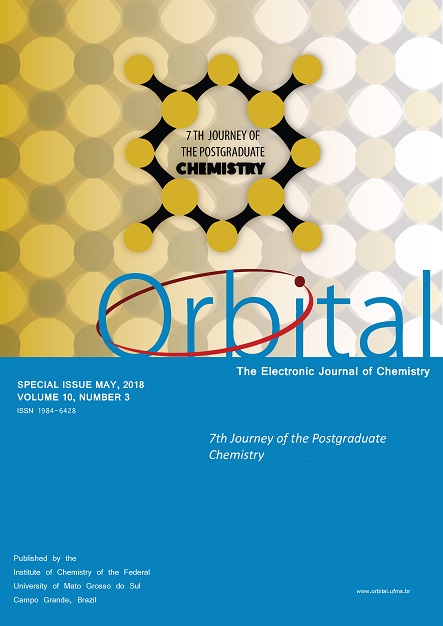Development an in House Validation for 5-Hydroxy-2-methyl-furfuraldehyde (HMF) Analysis in Fermented Beverages Produced from Honey, Cane Syrup and Corn Syrup by HPLC-UV
- fermented beverages,
- HMF,
- fermentation process,
- method validation
Copyright (c) 2018 Orbital: The Electronic Journal of Chemistry

This work is licensed under a Creative Commons Attribution-NonCommercial-NoDerivatives 4.0 International License.
Abstract
A chromatographic direct method using HPLC/UV for quantification of 5-hydroxy-2-methyfurfuraldehyde (HMF) content in different fermented beverages (mead, cane syrup fermented and corn syrup fermented) was developed and in house validated using sophisticated statistical tools for the first time in this work. HMF separation was executed with isocratic elution of a mobile phase comprising water (with 0.5% formic acid) and acetonitrile (90:10, v v-1), at 30 oC, flow rate of 1.0 mL min-1, injection volume of 5.0 µL and detection at 285 nm. Validation study demonstrated that the developed method has good performance, presenting low limits (LOD and LOQ of 0.16 and 0.53 mg L-1, respectively), good accuracy (recovery rates between 82.3 and 95.9%) and precision (RSD values between 3.87 and 8.84% and Horrat values between 0.43 and 0.76). Adequate selectivity and linearity estimates were also observed (R2 > 99.5%). Fermented beverages from honey, cane syrup and corn syrup presented HMF contents lower than starting foods used in fermentation. Besides this, results demonstrated that fermentation conditions are a key parameter for obtaining fermented beverages with low levels of this contaminant and that the fermentation can be a strategy for mitigation of HMF in foods such honey, cane syrup and corn syrup.

